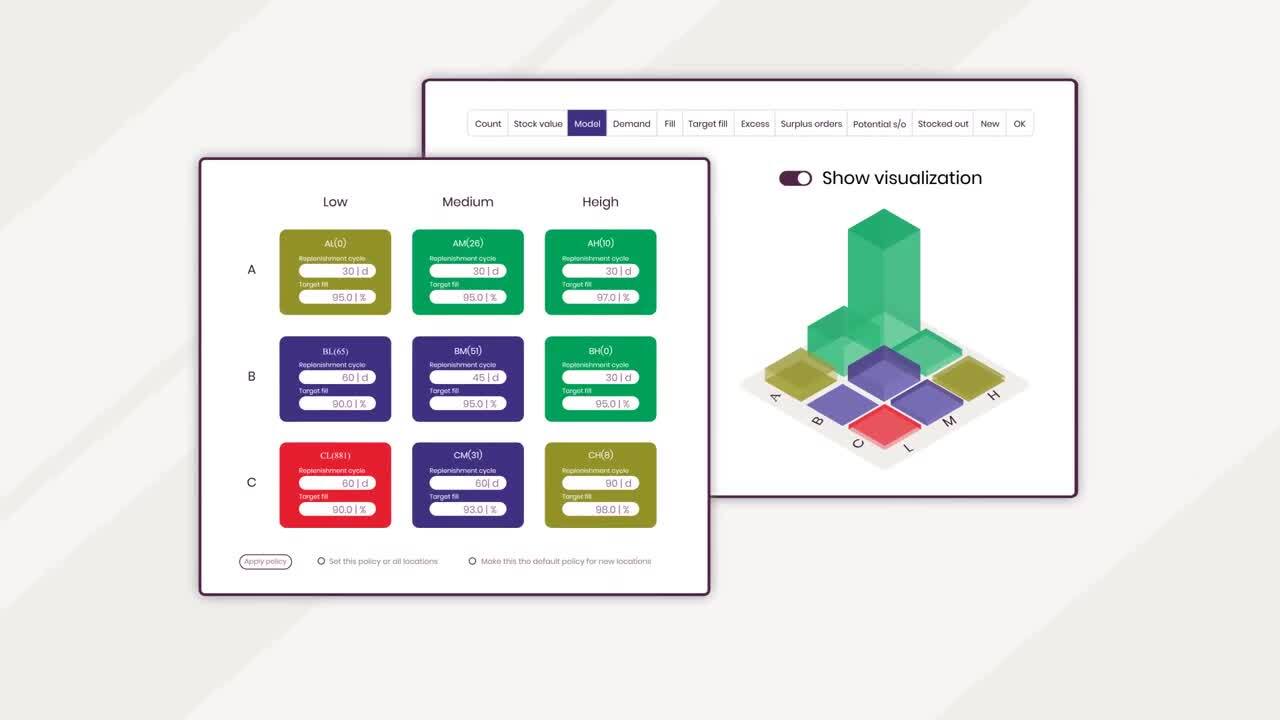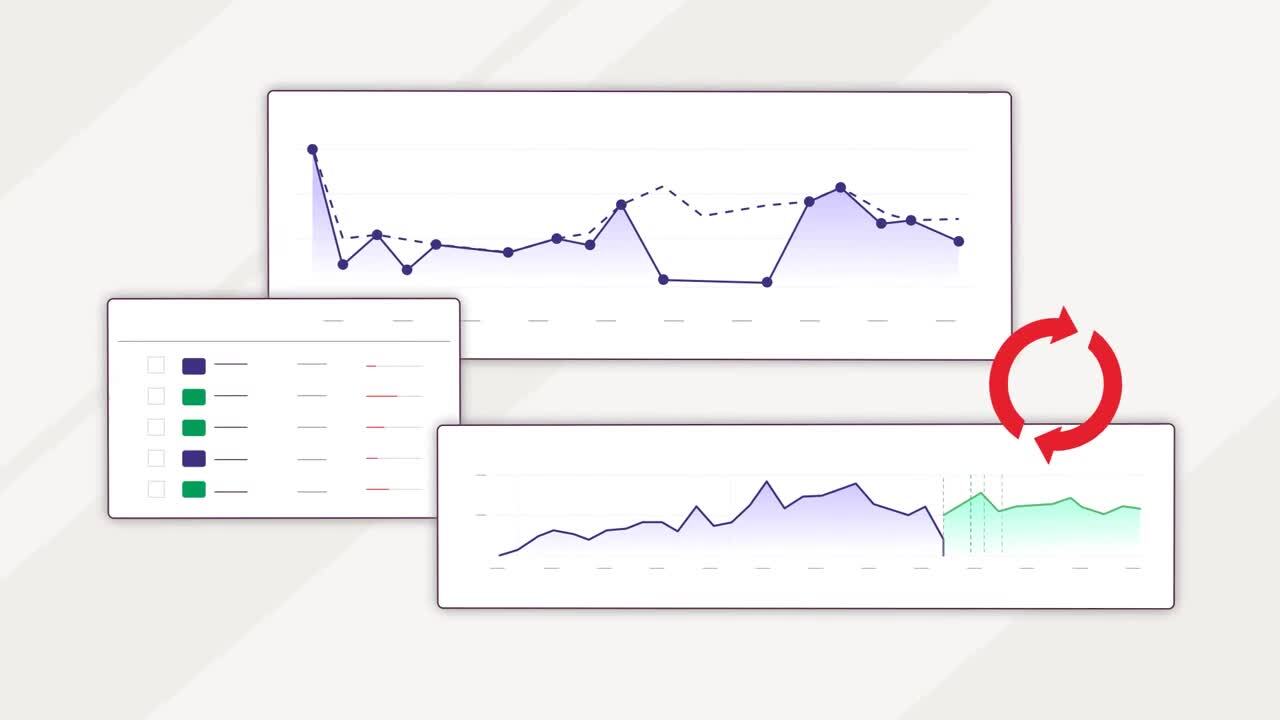Learn about the significance of inventory reduction and discover strategies to reduce inventory.
Inventory reduction is a vital component of inventory management best practices and entails trimming down excess stock to strike a delicate balance between supply and demand. Inventory reduction helps keep inventory holding costs in check, bolster cash flow, and mitigate risks associated with excess stock.
In this article, we’ll explore:
1 What is inventory reduction?
Inventory reduction is the process of reducing your inventory levels to meet reduced demand. If you cannot accurately measure and manage your inventory in line with supply and demand, you risk sitting with excess inventory that you don’t need and can’t sell, collecting dust in your warehouse.
2 Why is excess inventory a problem?
Excess inventory is a business’s additional inventory that typically exceeds the current or anticipated demand for those products. That excess inventory can result from factors such as overestimating demand, changes in market conditions, or the lack of visibility and ineffective inventory management processes.
The main issue with excess inventory is that it costs businesses a lot of money! The capital tied up in excess stock is not readily available for other critical business needs. This reduces financial flexibility and potentially impacts business growth and opportunities.
Other reasons why excess inventory is a problem for your business:
- Pay for storage costs: Storing excess inventory incurs additional costs, including warehouse space, insurance, security, and utilities, which can erode profits.
- The risk of obsolescence: Excess inventory increases the risk of items becoming obsolete, especially in industries with rapidly changing technology or trends, resulting in potential losses.
- Reduced cash flow: Excessive inventory can tie up cash flow, making it challenging to meet immediate financial obligations, such as paying suppliers, other overheads, or salaries.
- Decreased profit margins: Clearance sales or markdowns may be required to move excess inventory, reducing profit margins.
- Inefficient operations: Managing excess inventory can lead to inefficiencies in procurement, storage, and handling, increasing operational costs.
- Inventory damage: Over time, excess inventory may deteriorate or become damaged, resulting in decreased product quality and potential waste.
- Missed opportunities: By focusing on selling excess inventory, a company may miss opportunities to introduce new, more profitable products.
With excess inventory significantly impacting your business, reducing or minimizing the risk of excess inventory should be part of your daily inventory management best practices.
3 How will inventory reduction unlock cash?
Converting stagnant inventory into liquid assets will reduce holding costs and improve overall cash flow.
Here are a few ways to turn excess inventory into cash:
- Create package deals, pairing excess stock with more fast-moving, profitable items
- Run a series of promotions
- Organize a clearance sale
- Sell excess inventory in bulk to wholesalers
- Return the inventory to the supplier
- Repurpose the inventory
Want to reduce excess inventory?
Download the 5 Hidden Causes of Excess Inventory eBook now!
4 Methods for inventory reduction:
You’ll always have some extra inventory, so the goal is only to order and store additional inventory to support a specific goal. For example, If your sales team is running a promotion, you’ll need to order more of a particular stock item to support the promotion. Or, if you know a supplier always delivers a particular stock item late, you may need to order additional inventory, which will be your buffer stock. However, if you don’t have visibility of your inventory holding, know which SKUs are high-performing, or which suppliers under-deliver, you will most likely always land up with excess inventory.
The solution to combat inventory reduction is to select methods you can implement to help minimize the risk of excess inventory.
Let’s explore a few of these methods:
Improve inventory visibility. This is the most important aspect of inventory management. The more visibility you have on what’s happening with all stock items, the bigger the opportunity you have to rectify stock levels before they become a real problem. Firstly, you should have a clear view of all your inventory key performance indicators (KPIs), such as your inventory fill rate and stock holding. You also need visibility of the top SKUs that need urgent attention; these could be those running into excess or potentially stocking out. With this level of inventory visibility, you become proactive instead of reacting only when things are already in excess. Your cash is already tied up in that excess inventory at that stage.
Best Vinyl reduced its inventory from $2.7 million to $1.4 million.“With the Netstock dashboard, I can quickly see stockouts and potential stockouts, which allows me to have a focussed conversation with my sales team to determine what’s coming up and what else I need to consider when placing orders” – COO, Best Vinyl. Read more here.
Classify your inventory. Not all stock items are made equally, which means not every SKU in your inventory contributes the same to the bottom line. Planners can’t function efficiently by looking at every item in every location daily. They need to be able to see the top items that need attention, and you can only have that visibility once you’ve classified each item. Planners need to know the buying strategy for each item.
- Which item will be kept in stock, ready for customers to buy? (stocked items)
- Which items will only go into replenishment if there is firm demand? ( non-stocked items)
- Which items won’t be replenished at all for the foreseeable future? (obsolete items)
Once you have this information, you can classify your stocked items according to the Pareto Principle, which suggests one must focus on 20% of the stock that yields 80% of your sales. Classifying your inventory means categorizing your items into ABC, from the fastest to the slowest, and then by velocity, which focuses on high, medium, and low.
Imagine running an automotive parts store with two items in your inventory: car engines and nuts and bolts. These categories have the same annual turnover, meaning they sell the same units yearly. However, they are vastly different and demand unique inventory management strategies.Car Engine: High-Value, Low-Velocity Item
- Sales: Car engines are expensive and represent a significant portion of your inventory’s value. Each unit is costly, and you can’t afford to invest a lot of capital by stocking many of them.
- Velocity: These items sell slowly; customers don’t buy car engines every day. So, they may sit in your inventory for extended periods before being sold.
- Approach: To manage car engines effectively, you must carefully forecast demand and maintain enough stock to meet anticipated sales. You’ll also want to closely monitor market trends and supplier lead times to avoid unnecessarily overstocking and tying up capital.
Nuts and Bolts: Low-Value, High-Volume Item
- Sales: Nuts and bolts, on the other hand, are relatively inexpensive. While they may collectively have the same annual turnover as car engines, each unit costs significantly less.
- Velocity: These items move quickly. Customers buy nuts and bolts frequently, and you might restock them more often than car engines.
- Approach: For nuts and bolts, the key is to ensure you always have an ample supply on hand. Running out of these items could lead to customer dissatisfaction and lost sales. Therefore, keep a higher safety stock level and reorder point for these items, ensuring you can meet demand without delay.
Watch how Netstock automatically classifies your inventory.
Improve forecasting. Improving and fine-tuning forecasting activities enables businesses to streamline inventory management, reduce carrying costs, and optimize capital utilization, ultimately reducing overall inventory levels.
Here are a few forecasting activities to consider:
- Data analysis and historical sales data: Analyze historical sales data and market trends to identify seasonal fluctuations. This provides a solid foundation for accurate forecasts.
- Team collaboration: Involve sales, marketing, and other relevant teams in forecasting. Their insights and market knowledge can help refine predictions.
- Advanced forecasting models: Implement advanced forecasting models, such as time series analysis, moving averages, or machine learning algorithms, to improve prediction accuracy.
- Forecasting new products: Items without sales history need a manual forecast for the initial few months. Ensure the new item isn’t replacing a product with a cheaper or higher-quality alternative. If it is a replacement, link the new item to the old one, utilizing the old item’s sales history for forecasting. This speeds up assessing forecast accuracy and helps establish appropriate safety stock levels.
- Optimize safety stock: Fine-tune safety stock levels based on more accurate forecasts. This prevents overstocking while ensuring product availability.
- Continuous monitoring and adjustment: Regularly monitor forecast accuracy and make necessary adjustments based on actual sales data and changing market conditions.
- Develop various scenario plans: Incorporate scenario planning into your forecasting process by considering multiple future scenarios, such as market disruptions, changes in customer behavior, or supply chain interruptions. Assess how different scenarios might impact demand and adjust forecasts accordingly.
Watch how Netstock creates an accurate forecast for each item in each location.
Reduce replenishment cycles. The replenishment cycle is the plan that determines how often you should restock an item to meet future demand. This plan sets the frequency of replenishing inventory. Put simply, when you order an item, you want it to last for a certain number of days until the next order arrives. This means you should aim to have enough stock to cover that specific time frame between orders.
By reducing the replenishment cycle, you’ll streamline inventory processes, reduce the need for excess stock, lower carrying costs, enhance overall inventory turnover efficiency, and improve capital allocation.
When you can reduce the replenishment cycle, you can:
- Reduce safety stock: A shorter replenishment cycle allows you to maintain smaller safety stock levels because you can replenish inventory more frequently. Safety stock is a buffer that protects against variability in demand and replenishment times. When the replenishment cycle is reduced, the need for large safety stock quantities decreases, leading to lower overall inventory levels.
- Improve responsiveness: You can respond more quickly to changes in customer demand. This agility enables you to adjust orders based on real-time information, reducing the risk of overstocking due to inaccurate forecasts.
- Reduce holding costs: Smaller order quantities and lower safety stock levels associated with a shorter replenishment cycle translate to lower carrying costs. These costs include expenses related to warehousing, storage, and insurance, all of which decrease with reduced inventory levels.
- Improve inventory turnover: A shorter replenishment cycle often leads to higher inventory turnover rates. Products spend less time in storage and are sold more quickly, reducing the risk of obsolescence and freeing up capital for other investments.
- Optimize capital allocation: Less capital is tied up in inventory when the replenishment cycle is reduced. This improved capital efficiency allows businesses to allocate funds to other strategic initiatives.
- Increase supplier collaboration: Shortening the replenishment cycle may require closer collaboration, leading to more efficient and reliable supply chains. Timely communication and coordination can lead to faster lead times and order fulfillment.
Reduce supplier lead time. Supplier lead time is the time it takes for a supplier to fulfill an order from the moment the order is placed until the products are delivered and ready for use or sale by the customer.
The wholesaler places an order with a manufacturer for a shipment of car batteries. In this scenario, the supplier lead time is when the wholesaler submits the order until the manufacturer delivers the car batteries to the wholesaler’s warehouse. If the supplier lead time is three weeks, it will take approximately three weeks for the car batteries to be produced, packed, and delivered to the wholesaler. During this time, the wholesaler may plan its inventory, manage customer orders, and ensure it has sufficient stock to meet the demand from the repair shops it serves.
Measuring your suppliers’ performance is critical to inventory planning and supporting inventory reduction. With accurate supplier data, you’ll know which suppliers deliver on time and in full. With this level of visibility, you can negotiate reduced lead times with key suppliers. Regularly communicating with suppliers lets you know if they’re experiencing any challenges in delivering stock, giving you enough time to source alternative stock from another supplier. By reducing lead times, you’ll:
- Lower safety stock: Shorter lead times mean you can maintain smaller safety stock levels, reducing the need for excess inventory.
- Faster response to demand: You can quickly adjust planning to changing customer demand, minimizing the risk of overstocking.
- Improve cash flow: Shorter lead times free up working capital that can be used for other business needs, improving cash flow.
Keir Surgical reduced supplier lead times with accurate supplier data“Supplier lead times were always a guess and based on a supplier’s full line as opposed to individual items. It took tedious amounts of time to work out our orders each month, and I would need to go back and check every row to make sure that the calculated number made sense based on the three or 6-months sales trend” – Operations Manager of Keir Surgical.
Read more here
Review supplier MOQs. The supplier sets the Minimum Order Quantity (MOQ), the smallest stock a supplier will sell in one order. Customers must meet or exceed the MOQ in their orders when buying from suppliers.
By reviewing supplier MOQs, you can contribute towards inventory reduction by doing the following:
- Determine order size: MOQs specify the minimum quantity that must be ordered, influencing the size of inventory orders.
- Balance costs: MOQs help balance ordering in larger quantities to benefit from economies of scale (lower unit costs) and the need to manage carrying costs associated with holding excess inventory.
- Improve inventory planning: MOQs impact carrying, order, and holding costs.
- They help determine how much stock to order to meet demand while adhering to supplier requirements.
- Visibility of costs: MOQs impact carrying costs, order costs, and holding costs. Ordering below the MOQ may result in higher unit costs, while ordering above it may lead to excess inventory and associated holding costs.
- Improve efficiency: MOQs can influence supply chain efficiency by affecting order frequency and lead times. Large MOQs may lead to infrequent orders but longer lead times, while smaller MOQs may necessitate more frequent orders with shorter lead times.
- Better cash flow: MOQs affect the allocation of working capital. Ordering large quantities to meet MOQs ties up more cash, while smaller orders may free up capital for other uses.
- Mitigate risk: MOQs can be adjusted to mitigate risk. Smaller MOQs provide flexibility to reduce exposure to market uncertainties or fluctuations in demand.
- Better supplier agreements: MOQ negotiations and agreements with suppliers are essential for maintaining strong relationships and ensuring smooth supply chain operations.
- Improve demand forecasting: MOQs impact demand forecasting by influencing order quantities. Accurate demand forecasts are essential to avoid overstocking or stockouts.
Zhik managed to reduce long lead times and high MOQs.“Implementing Netstock, along with other process changes, allowed us to complete our annual order cycle with our suppliers ahead of their annual production capacity peak periods.” – Global Head of Operations, Zhik
Read more here
5 How technology can help with inventory reduction
Managing your inventory with an inventory planning solution will automatically provide inventory visibility, automated processes, and predictive data-driven insights so you can quickly make the best inventory planning decisions for your business. There will always be variations in supply and demand, and having the technology to adjust inventory levels in line with these changes automatically will also contribute to inventory reduction.
Integrating into your existing ERP, a planning solution like Netstock uses the data in your ERP to provide the visibility you need to help with inventory reduction.






